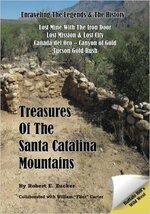froggy
Full Member
[FONT="]The Santa Lucia Lost Mine and a store of rich gold ore and bars worth $5 million are located in the Table Mountains.
Neer Pusch Ridge, Santa Catalina Mountain[/FONT]
Help if you can!
Neer Pusch Ridge, Santa Catalina Mountain[/FONT]
Help if you can!





 did they get this iron door in the first place ?? I need coffee
did they get this iron door in the first place ?? I need coffee  the spanish were expert steel workers since at least the 6th century B.C. toledo steel was the best steel on earth for more than a millennium. i'll bet they made the door out of scrap. heat the steel to bright cherry and pound away. check out this video.
the spanish were expert steel workers since at least the 6th century B.C. toledo steel was the best steel on earth for more than a millennium. i'll bet they made the door out of scrap. heat the steel to bright cherry and pound away. check out this video. ?
? 



